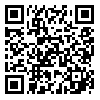1. Shams G, Karam Ghadiri N, Esmaili Torkanbori Y, Amini H, Ebrahim Khani N, Naseri Beferoni A, et al. Prevalence obsessive-compulsive symptoms and its comorbidity with psychiatric symptoms in adolescents. Advances in Cognitive Sciences. 2008;9(4):50–9. [Persian] [
Article]
2. Wilhelm S, Steketee GS. Cognitive therapy for obsessive compulsive disorder. Asgharipour N, Behfar Z, Karimi H. (Persian translator). Tahran: Sayehsokhan Pub; 2016.
3. Hawley LL, Rector NA, Richter MA. Technology supported mindfulness for obsessive compulsive disorder: the role of obsessive beliefs. J Anxiety Disord. 2021;81:102405. [
DOI]
4. Cervin M, McNeel MM, Wilhelm S, McGuire JF, Murphy TK, Small BJ, et al. Cognitive beliefs across the symptom dimensions of pediatric obsessive-compulsive disorder: type of symptom matters. Behav Ther. 2022;53(2):240–54. [
DOI]
5. Clark D. Afkare mozahem dar ekhtelal haye balini, teory, tahghighat, darman [Disturbing thoughts in clinical disorders: theory, research & treatment]. Azaraeen S, Gharavi M. (Persian translator). Tahran: Arjmand Pub; 2019.
6. Falkenstein MJ, Schreck M, Potluri S, Nota JA, Kelley KN, Beard C, et al. Longitudinal relations of obsessive beliefs, obsessions, and compulsions during treatment for obsessive compulsive disorder. Cogn Ther Res. 2020;44(4):846–57. [
DOI]
7. Ouellet-Courtois C. Reality check : inferential confusion and cognitive confidence as core cognitive factors across the obsessive-compulsive spectrum [PhD dissertation]. [Montreal, Canada]: Faculty of Psychology, Montreal University; 2020.
8. Olatunji BO, Christian C, Brosof L, Tolin DF, Levinson CA. What is at the core of OCD? A network analysis of selected obsessive-compulsive symptoms and beliefs. J Affect Disord. 2019;257:45–54. [
DOI]
9. Klein KP, Harris EK, Björgvinsson T, Kertz SJ. A network analysis of symptoms of obsessive compulsive disorder and depression in a clinical sample. J Obsessive Compuls Relat Disord. 2020;27:100556. [
DOI]
10. Kim JE, Lee SW, Lee SJ. Relationship between early maladaptive schemas and symptom dimensions in patients with obsessive-compulsive disorder. Psychiatry Res. 2014;215(1):134–40. [
DOI]
11. Sunde T, Johnson SU, Himle JA, Bertelsen TB, Haaland VØ, Vogel PA, et al. Metacognitions and obsessive beliefs in obsessive–compulsive disorder: a study of within- and between-person effects on long-term outcome. Cogn Ther Res. 2021;45(6):1105–19. [
DOI]
12. Baraby LP, Wong SF, Radomsky AS, Aardema F. Dysfunctional reasoning processes and their relationship with feared self-perceptions and obsessive-compulsive symptoms: An investigation with a new task-based measure of inferential confusion. J Obsessive Compuls Relat Disord. 2021;28:100593. [
DOI]
13. Hooman HA. Structural equation modeling with LISREL application. Tehran: Samt Pub; 2018. [Persian]
14. Obsessive Compulsive Cognitions Working Group. Psychometric validation of the Obsessive Belief Questionnaire And Interpretation Of Intrusions Inventory—part 2: factor analyses and testing of a brief version. Behav Res Ther. 2005;43(11):1527–42. [
DOI]
15. Shams G, Esmaili Y, Karamghadiri N, Ebrahimhkani N, Yousefi Y, McKay D. Psychometric properties of the Persian language version of Obsessive Beliefs Questionnaire (OBQ-44) in Iranian general population. Acta Med Iran. 2014:52(1):66–75.
16. Lovibond PF, Lovibond SH. The structure of negative emotional states: comparison of the Depression Anxiety Stress Scales (DASS) with the Beck Depression and Anxiety Inventories. Behav Res Ther. 1995;33(3):335–43. [
DOI]
17. Ahmad N, Roslan S, Othman S, Shukor SFA, Bakar AYA. The validity and reliability of psychometric Profile for Depression, Anxiety and Stress Scale (DASS-21) Instrument among Malaysian undergraduate students. International Journal of Academic Research in Business and Social Sciences. 2018;8(6):812–27. [
DOI]
18. Samani S, Jokar B. Barrasiye etebar va revaei forme kootah meghyas afsordegi, ezteerab va feshar ravani [A study on the reliability and validity of the short form of The Depression Anxiety Stress Scale (Dass-21)]. Journal of Social Sciences and Humanities of Shiraz University. 2007,26(3):65–76. [Persian]
19. Wells A, Cartwright-Hatton S. A Short Form of the Metacognitions Questionnaire: properties of the MCQ-30. Behav Res Ther. 2004;42(4):385–96. [
DOI]
20. Shirinzadeh Dastgiri S, Goodarzi MA, Rahimi C, Naziri Gh. Study of factor structure, validity and reliability of Metacognition Questionnaire-30. Journal of Psychology. 2009;12(1):445–61. [Persian]
21. Aardema F, O'Connor KP, Emmelkamp PMG, Marchand A, Todorov C. Inferential confusion in obsessive–compulsive disorder: the inferential confusion questionnaire. Behav Res Ther. 2005;43(3):293–308. [
DOI]
22. Ghorbali A, Shairi MR, Gholami Fesharaki M. A preliminary study of psychometric properties of the Persian version of the expanded version of The Inferential Confusion Questionnaire (ICQ-Ev) in a non-clinical sample. Journal of Psychological Science. 2018;17(67):373–9. [Persian] [
DOI]
23. Meyers LS, Gamst G, Guarino A. Pazhouhesh chand motaghayyeri karbordi (tarh va fafsir) [Applied multivariate research (design and interpretation)]. Hassanabadi H, Pasha Sharifi H, Farzad V, Rezakhani SD, Izanloo B, Habibi M. (Persian translator). Tahran: Roshd Pub; 2020.
24. Bollen KA, Long JS. Testing structural equation models. Newbury Park: Sage Pub; 1993.
25. Kline RB. Principles and practice of structural equation modeling. 4th edition. New York, London: The Guilford Press; 2015.
26. Acenowr CP, Coles ME. OCD during COVID-19: understanding clinical and non-clinical anxiety in the community. Psychiatry Res. 2021;300:113910. [
DOI]
27. Eum K, Rice KG. Does generic metacognition explain incremental variance in O–C symptoms beyond responsibility and perfectionism? J Obsessive Compuls Relat Disord. 2021;28:100612. [
DOI]
28. Jürgens C, Rupp C, Doebler P, Andor F, Buhlmann U. Metacognition in obsessive-compulsive disorder symptom dimensions: role of fusion beliefs, beliefs about rituals and stop signals. J Obsessive Compuls Relat Disord. 2019;21:102–11. [
DOI]


 ، فرح لطفی کاشانی*1
، فرح لطفی کاشانی*1 

 ، مالک میرهاشمی1
، مالک میرهاشمی1 





